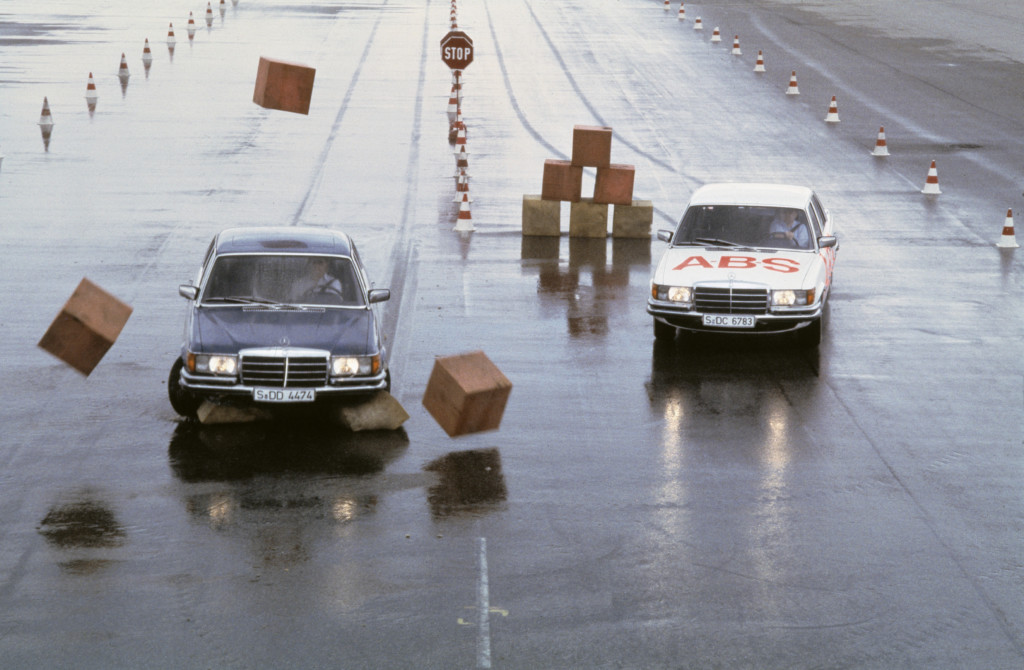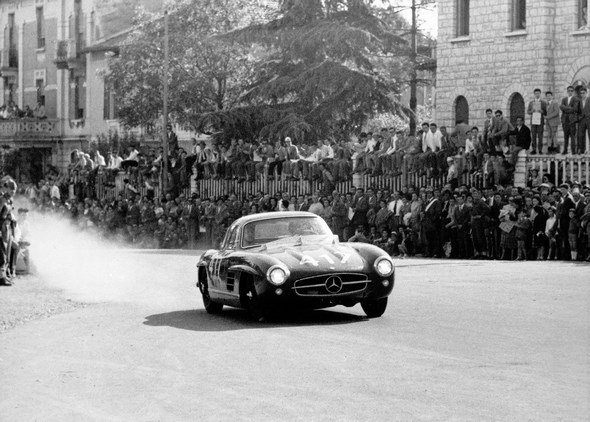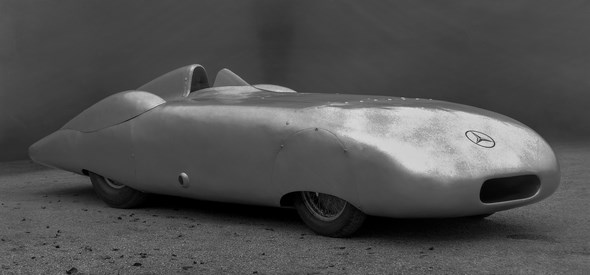Not just for the ladies: the Mercedes-Benz 190 SL
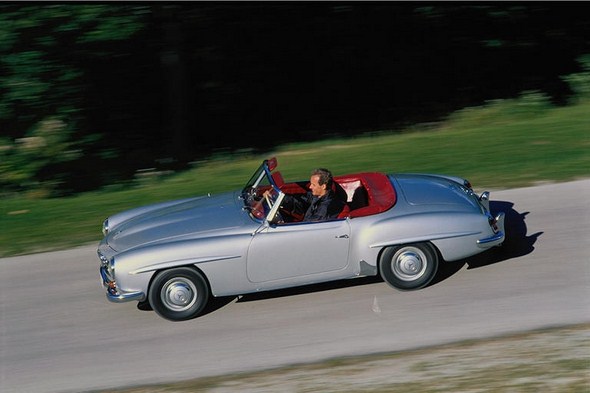

May 1955: Start of production of the Mercedes-Benz 190SL
25,881 units of the elegant roadster produced
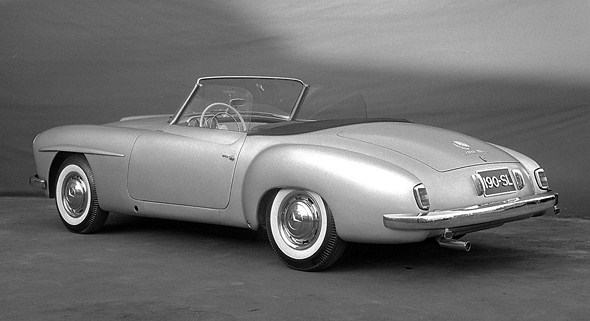
Stuttgart. In time for the summer of 1955, production of the four-cylinder-engined 190SL sports car was begun at the Sindelfingen plant.

Designed as a sporty, elegant two-seater for touring, the car, internally designated W121, rapidly acquired great popularity, also and especially among the ladies.

Initially, only a roadster with soft-top was available (price in 1955: DM 16,500). It was joined in the fall by a coupe with removable hardtop, available with or without a soft-top (prices in September 1955: DM 17,650 / DM 17,100).

By the time production was discontinued in February 1963, 25,881 units had been built, and most of these had been shipped to the USA. The 190SL initiated the post-war tradition of roadsters from Mercedes-Benz.

At the International Motor Sports Show in New York (February 6 – 14, 1954), the new 300SL super sports car (W198) was the star on the Mercedes-Benz stand.

But it did not overshadow the 190 SL roadster, presented at the same time and often referred to as the Gullwing’s “little brother”.

The 190 SL equally enjoyed a highly positive response, prompting the decision in favor of large-scale production. The 190SL and the 300SL were designed on the initiative of the American Mercedes importer Maximilian (“Maxi”) E. Hoffman who made out excellent sales prospects for the two models in the US market – and he was proved right: both series sold very well indeed.

The 190SL was developed on the basis of the three-box bodied Mercedes from the W120 series and designed as a roadster right from the start.

Unlike the Gullwing, it was not meant to be a thoroughbred sports car but a sporty, elegant two-seater for touring and everyday use.

The bodywork of the 190 SL was designed by Karl Wilfert and Walter Häcker who modeled it closely on that of the 300SL.
The car displayed in New York in February 1954 was a prototype, neither matured in its styling nor fully tested in terms of its engineering. The 190SL was carefully revised in both respects, and the final version was presented by Mercedes-Benz at the Geneva Motor Show in March 1955.
It differed significantly from the prototype: the stylized air intake on the engine hood had been omitted, the front edge of the engine hood had been relocated toward the rear, “eye-brows” now also featured on the rear wheel cut-outs, and the bumpers, indicators and rear-light units had been modified.
The pre-production series was built at the Sindelfingen plant from January 1955, and production of the main series began in May.

The trade press praised the safe handling characteristics of the 190SL. These were ensured, among other things, by the single-joint swing axle with a low pivot point adopted from the 220a.
The front axle suspension complete with subframe had been adopted from the 180 with which the 190SL also shared the floor unit, though in shortened form.

The 1.9 liter gasoline engine had been newly developed. The four-cylinder powerplant featured an overhead camshaft and is regarded as the archetype of an entire family of engines.
In the 190SL, it developed 105hp (77kW) at 5700/min and accelerated the roadster from standstill to 100 km/h in 14.5 seconds.
The roadster’s top speed was 170 km/h – a highly respectable speed on the roads of the 1950s and 60s. At 8.6 liters per 100 km/h, fuel consumption was fairly moderate, and the 65 liter tank provided the car with an adequate range.

Throughout its production period, the 190 SL was improved in numerous detail features. Among the more conspicuous modifications were the broad chrome trim strips at the upper door edges (March 1956) and larger rear-light units (June 1956, also used on models 220a, 219 and 220 S).
In July 1957, the rear number plate illumination was relocated to the bumper horns to permit the attachment of the broad number plates introduced at the time.
The rear bumper horns were incorporated in the standard specifications while those at the front were available at extra cost. They had been standard all round on the US versions right from the start. From October 1959, a new hardtop with a larger rear screen on the coupes provided a clearly improved view toward the rear.
In August 1960, the trunk lock was modified and the previously used bow was replaced by a shell-shaped handle. In 1963, the last 190 SL came off the assembly line, bringing the total production volume to 25,881 units.

The first brochures included photos of a sports version of the 190 SL, with doors made of light alloy and a small racing-car windshield made of Perspex.
The omission of soft-top, bumpers, heat exchanger and insulating material reduced the car’s weight to some 1,000 kilograms, roughly ten percent less than the production roadster’s.
In engineering terms, the lightweight 190SL differed only slightly from the production version, the modifications extending to little more than a bit of fine-tuning of the engine, lowering of the bodywork and fitting of sports shock absorbers and modified springs.
There are no records of the number of units produced, and few sports versions were sold to customers. The sports version of the 190SL scored its greatest successes in 1956, in the Grand Prix for sports cars in Macau, entered by the Daimler-Benz importer in Hong Kong.
The right-hand-drive roadster won the race ahead of a Ferrari Mondial and several Jaguars and Austin-Healeys. In the same year, the Moroccan general distributor of Mercedes-Benz won the GT class (up to two liters displacement) in the Grand Prix of Casablanca.
Due to racing regulations, however, the idea of a 190SL for motor sport was not pursued any further: the car, modified as described above, would have been allocated to the category of production sports cars in many competitions and would therefore have been without a chance.
What’s more, a decision made by the FIA (Fédération Internationale de l’Automobile) racing authority prevented the car from being allocated to the GT category, the decision requiring a Gran Turismo to be completely enclosed – a condition the converted 190SL was unable to fulfill.

